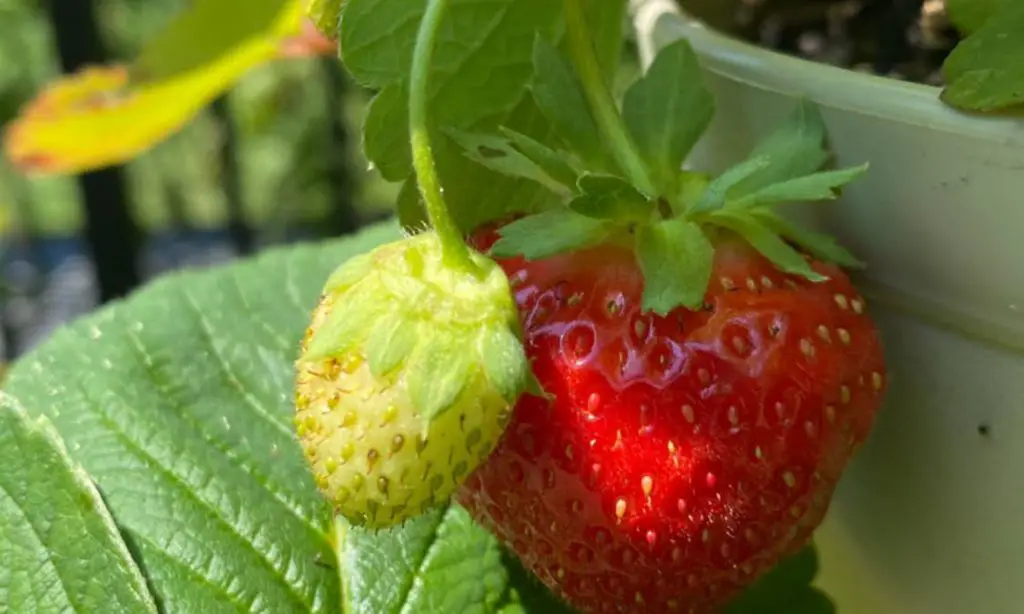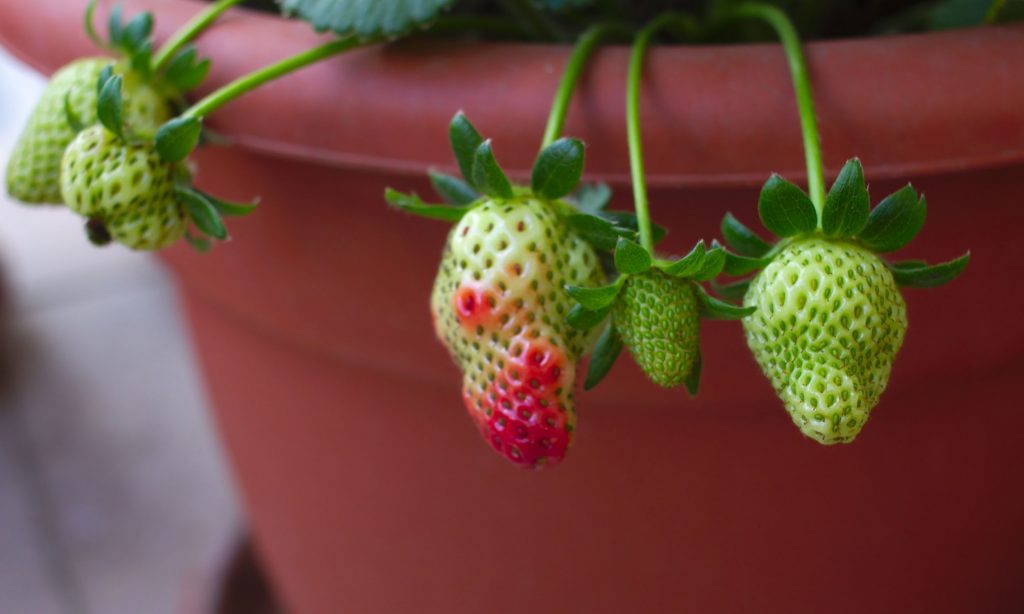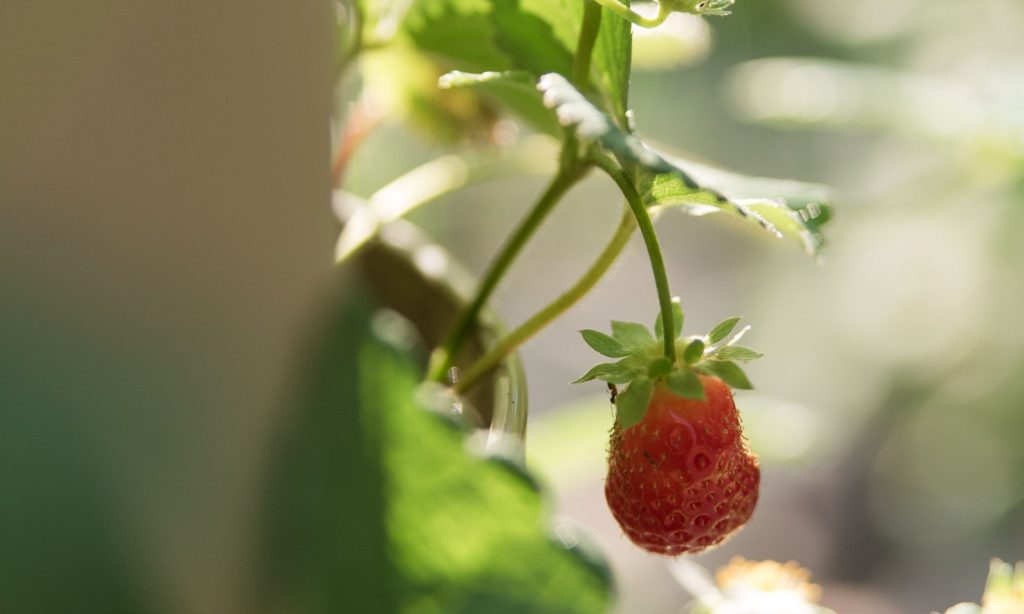Tips for Growing Strawberries in Containers
Most people think that you can only grow strawberries in the ground, but that’s not true! You can actually grow strawberries in containers on your patio or deck. Check out these tips for growing strawberries in containers.
Disclosure: Some of the links below are affiliate links, meaning, at no additional cost to you, I will earn a commission if you click through and make a purchase.
1. Choose the appropriate type of strawberry for your climate and preference
There are many different types of strawberries, and the best type for you to grow will depend on your climate and what you are looking for in a strawberry. For example, if you live in a warm climate, you might want to try growing Chandler strawberries, which are known for their sweetness. If you prefer a more tart flavor, then Seascape strawberries might be a better option. And if you are looking for a strawberry that is resistant to disease, then Tribute strawberries might be the best choice. So, when choosing a strawberry to grow in your garden, be sure to consider your climate and what type of flavor you prefer. With so many options available, there is sure to be a perfect strawberry out there for you.
We have had great success growing strawberries from Burpee.
2. Plant strawberries at the proper time
If you want to enjoy fresh strawberries all summer long, it’s important to plant them at the right time. In most areas, that means setting out strawberry plants in late winter or early spring. However, it’s important to check your local climate conditions before planting, as some areas have different planting times. For example, in warmer climates, it may be best to wait until early fall to plant strawberries. Whichever planting time you choose, be sure to give the plants enough room to spread out. Strawberry plants can spread up to 2 feet, so allow for plenty of space between each plant. With proper care and attention, your strawberry plants will produce an abundance of delicious berries for you to enjoy all season long.

3. Choose the best location for planting strawberries
One of the most important things to consider when planting strawberries is location. Strawberries need full sun and well-drained soil in order to thrive. They also prefer a slightly acidic soil, with a pH between 5.5 and 6.5. If necessary, apply a soil acidifier to lower pH.
You should also avoid planting strawberries where tomatoes, potatoes, or peppers have previously been grown, as they are susceptible to verticillium wilt, a fungal disease that can be passed from one plant to another through the soil.
4. Plant strawberries correctly
Purchase disease-free crowns and transplants from nurseries to avoid diseases common to strawberries. Plant strawberry plants 12 inches apart, taking care not to bury the crown.
If planting from crowns, follow these steps:
- Trim roots to about 4 inches long, and soak in compost tea.
- Just before planting, dust roots with kelp meal and bone meal.
- Dig a 6 inch hole with a cone of soil in the middle.
- Drape roots over cone, filling in hole with soil.
- DO NOT BURY CROWN. Crown should remain above the soil.
- Water in crowns with compost tea.
5. Mulch strawberries well
One of the best things you can do for your strawberries is to mulch them well. Mulch helps to keep the berries clean, and it also helps to retain moisture and regulate temperature.
Straw is a great material for mulching strawberries, as it is soft and does not compact around the plants. In addition, straw mulch breaks down over time, adding valuable nutrients to the soil. When applying straw mulch, be sure to spread it evenly around the plants and leave a few inches clear around the stems. This will help to prevent rot and ensure that the strawberries get the full benefit of the mulch.
With a little effort, you can ensure that your strawberries are healthy and productive for years to come.

Stay Organized!!
This garden planner has everything you need to plan a successful garden. There’s space to take notes, set goals, and jot down your wishlist for your garden. Plus, it’s printable!! The Garden Planner and Journal will keep you organized and give you a place to take notes and reflect on your garden.
6. Water and fertilize strawberries correctly
To get the most out of your strawberries, it’s important to water and fertilize them correctly. During the growing season, strawberries need about an inch of water per week.
The best way to provide this is through deep, infrequent watering. This encourages the development of deep roots, which are more resistant to drought.
Water the strawberries in the morning so that the foliage has a chance to dry off before nightfall. This reduces the risk of fungal diseases. Fertilize the strawberries three times during the growing season: when they first start to grow in the spring, when they begin to flower, and after harvesting.
Use a fertilizer with a low nitrogen content to avoid promoting leaf growth at the expense of fruit production.
7. Encourage strong strawberry plants
- To encourage root production, remove flowers for 3 months after planting.
- Remove runners from plants immediately to keep energy in plant. If desired, pot up runners with potting soil and keep well-watered while they develop roots.
- After 3-4 years, harvests may diminish. At this time, it’s best to remove old strawberry plants and begin again with new crowns from the nursery in a different location (avoid locations where strawberries, raspberries, tomatoes, or potatoes grew previously).
8. Prevent and manage common strawberry pests
Anyone who’s ever grown strawberries knows that they can be susceptible to pests. Aphids, mites, and Japanese beetles are just a few of the common invaders that can wreak havoc on a strawberry patch. Luckily, there are a few things that you can do to prevent and manage these pests.
First, keep your strawberries well-watered. This will help to encourage strong growth and deter pests.
Second, inspect your plants regularly for signs of infestation. If you see any pests, remove them by hand or treat the plants with an appropriate insecticide.
Finally, make sure to rotate your strawberry crop each year. This will help to prevent pests from becoming established in your garden.

9. Harvest strawberries correctly
If you’re one of the lucky ones with a strawberry patch in your garden, you’ll want to know how to harvest them correctly.
First, wait until the berries are fully ripened – they should be plump and red all over.
Gently twist the berries to remove them from the stem, taking care not to damaging the fruit.
Once they’re picked, strawberries should be consumed within a day or two, as they quickly begin to lose their flavor.
If you can’t eat them right away, refrigerate them in a single layer on a paper towel-lined plate.
These tips should help you get started growing delicious strawberries in containers. With a little bit of care and attention, you’ll be able to enjoy fresh strawberries all summer long! What other fruit or vegetables do you like to grow in containers? Let us know in the comments below!
You may also enjoy these related articles:
- Growing Strawberries
- Overwintering Strawberries in Greenstalks
- Creating a Permaculture Orchard
- Growing Blueberries in Containers
Did you enjoy this article? Want to hear more? Stay in touch! Sign up below to receive weekly tips and inspiration for your homestead.

